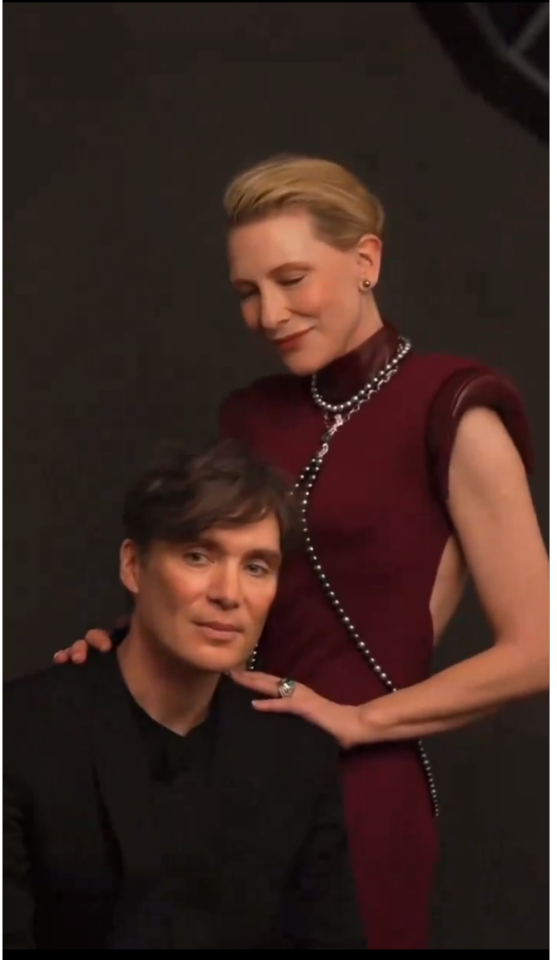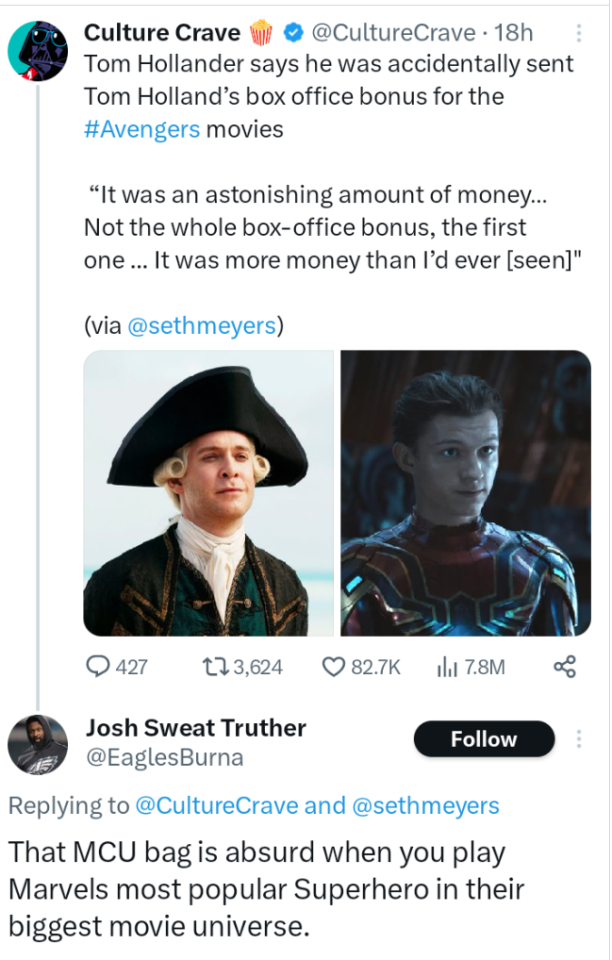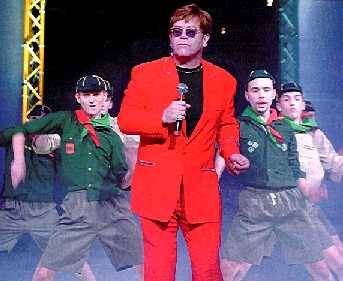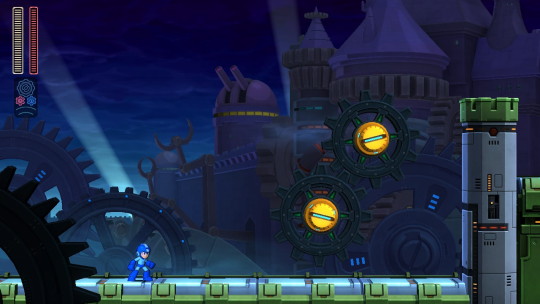#mega man reggae
Explore tagged Tumblr posts
Text

treble and reggae
#rkgk#mega man#megaman#rockman#ロックマン#mega man treble#treble mega man#mega man reggae#reggae mega man
65 notes
·
View notes
Text
merry christmas!
Drew 2023


#megaman#rockman#ロックマン#fanart#megaman classic#mega man#roll#Bass#forte#auto#Piano#megamanoc#treble#reggae#christmas#Rush
116 notes
·
View notes
Text

Reggae Adaptor Piano!
#tumblr#megaman#rockman#mega man#piano#mega man megamix#megaman megamix#megaman gigamix#reggae#rockboard#mega man 10
38 notes
·
View notes
Text

Bass has fused with both Treble and Reggae, and multiplied this power with Evil Energy. A very dangerous combination, not easy to control. But that’s what Mega Man, his siblings, and their own robo-animal buddies, are here to take care of
Something I haven’t mentioned about this until now, I colored Roll’s hair as brown instead of blonde. Because if Dr. Light used to have brown hair, and if Blues and Rock have brown hair depending on the art, why does Roll have blonde hair? I just wanted to make her look consistent with her family on that kind of genetic level, despite her being a robot and Light hypothetically can just give his creations whatever hair he wants.
This won’t be the last time you see me color her like that
#mega man#megaman#mega man fanart#art#fanart#digital fanart#digital drawing#rock#roll#blues#bass#treble#reggae#beat#rush#tango#robots#robot art#capcom#capcom fanart
13 notes
·
View notes
Text

Just a few of the Wily’s that’ll be showing up besides the Robot Masters.
#megaman#mega man#ruby spears mega man#art#megaman ruby spears#rockman#bass megaman#waltz#bass#reggae#treble
33 notes
·
View notes
Text
CD Entry #005
Released in 1993 exclusively in Japan, the Famicom board game-style spinoff of the classic series, Wily & Right no Rockboard: That’s Paradise! is notable for several reasons. While it is far from the most obscure Mega Man game, it is certainly the most overlooked of the 8-Bit era, and a majority of non-Japanese fans likely have only a vague knowledge of the title. As such, this entry will cover several miscellaneous tidbits related to Rockboard, as well as its impact on the later series.

Rockboard, as a general overview, is a digital board game commonly likened to Fortune Street or Monopoly. Players compete to purchase ownership of property spaces and accumulate money through charging rent on other players, though there are also a number of cards one can randomly obtain with varying effects.
This premise is, on its surface, completely unrelated to the Mega Man universe, and could be misjudged as a generic tie-in. However, in actuality, Rockboard introduces enough classic series charm that it actually established aspects to later reappear in the more well-known entries. ‘Zenny’, for instance, is a reoccurring currency in many Capcom titles, but first made its debut into Mega Man serving as the money in this game. It would later appear prominently in the two spinoff series of Mega Man Legends and Mega Man Battle Network respectively. The mechanic of cards is also one rich with charm, as they are all effects based on, and using sprites of, characters from throughout the series up to that point. Game Boy exclusive characters such as Quint and Enker had their only Famicom appearance in Rockboard, as well as the bird robot Reggae, who was created for and first appears in this game; he appears both as a card that deals negative effects as well as a visual to taunt the losing player. Reggae would make his next appearance two years later as the invalid password icon in Mega Man 7, and after that became an infrequent support robot to Bass much the same way Beat is to Mega Man.

One of the most obvious oddities with this title comes with the very characters you play the game with. Despite the game’s name, Mega Man only serves as a sort of host and mascot, introducing game rules and appearing on the results screen but not taking part in the game directly. In his absence, players choose from any of the named human characters in the series up to that point, including consistent antagonist Dr. Wily, as well as Roll, the only playable robot. The game’s loose plot justifies this as each of the five having their own ambitions, from world domination to becoming a princess, that all happen to require building up their own real estate and acquiring plenty of funding. These characters also get plenty of dialogue throughout a match reacting to the various goings-on, though little of it is of any substance besides conveying game information. Still, Rockboard marks the first time that these characters’ personalities are elaborated on to this extent within the game itself.

To conclude, it’s somewhat common knowledge at this point (but still very much worth noting) that Rockboard was intended to receive a full port to Game Boy, making it the only Famicom Mega Man game to receive this treatment as opposed to a ‘Mega Man World’ game. This port was mostly completed, even having full battery saving compatibility, but was shelved for reasons not fully known.
Thankfully, this version of the game has been preserved through 2020’s Nintendo Gigaleak, and can be played through emulation or a flash cart today. Famicom Rockboard itself does have a rough, yet functional English fan translation that can also be played in the same manner, so even though the game has never received an official re-release, anyone intrigued by either version of this under-appreciated title is able and free to play it in the modern day; even you, the reader!
16 notes
·
View notes
Text
"Biopics of massively famous musicians are rarely very good, often because they stumble at the question of whom exactly they’re being made for. Are you making a movie for the already initiated die-hard fans yearning to see the life and times of their hero reflected back at them in exacting detail? Or is your movie a welcome mat for novices, a breezy jukebox of greatest hits aimed at cultivating new generations of fans, goosing streaming tallies and catalog sales in the process? Most musician biopics never manage to resolve this tension, in part because they’re usually also serving a third master, namely the musician’s estate, which tends to hold its own, very specific ideas about on-screen depiction.
Bob Marley: One Love, the new movie about the late reggae superstar that’s produced by Marley’s widow, Rita, along with some of his children, is a biopic that does seem to know whom it’s for, which isn’t a point in its favor. The film is directed by Reinaldo Marcus Green (King Richard) and stars Kingsley Ben-Adir as Marley, who does his best with the role despite not really looking or sounding much like the real Marley. (Within the past four years Ben-Adir has played Malcolm X, Barack Obama, and Bob Marley, quite the triptych of historical figures.) Lashana Lynch plays Rita and steals the film in every scene she’s in, even if the movie’s script fails to elevate her character past the archetypical suffering-yet-supportive wife of a genius.
Rather than taking a cradle-to-grave approach to Marley’s life, One Love instead focuses on a single period of Marley’s career, his self-imposed exile to England in the aftermath of the 1976 attempt on his life at his home in Kingston, during which time he recorded Exodus, the 1977 LP that marked his full breakthrough into global superstardom. The film opens with the assassination attempt, after which we’re quickly whisked to London, where the film depicts Marley writing most of Exodus’ songs in a cloying series of “eureka!” moments that tend to populate movies of this kind. Snippets of Marley’s classic “Redemption Song” surface as a recurring musical motif in the film, and in one of the last scenes, we see Marley performing the song for his awestruck family in a sappy flourish that’s also anachronistic. (By most accounts, Marley didn’t write “Redemption Song” until 1979.) Periodically we’re treated to a series of flashbacks of the singer’s earlier life, a clichéd device that this movie could have used more of: Brief forays into Marley’s conversion to Rastafarianism are surprisingly well done, and a scene of a teenage Marley and the Wailing Wailers performing “Simmer Down” at Coxsone Dodd’s Studio One is the best moment in the film.
One Love is an inspirational tale about a Great Man who used music to unite the world, one that reduces one of the most consequential and complicated artists of the 20th century to a walking fount of genial aphorisms, the guy who suggested we all get together and feel all right. As such, the film indulges a decadeslong public appetite for a particular imagining of Marley that his estate now seems depressingly eager to feed. It’s been 42 years since Marley died of a rare form of melanoma at age 36, and I’m not sure there’s a musician who’s more literally iconic: Go to any commercial district in any part of the world and within minutes you’ll find an opportunity to buy something bearing Marley’s likeness. In the United States, Marley has been a staple of dorm-room walls for generations: The casual and underinformed co-optation of Marley by American bro culture has even inspired a recurring meme in which Marley’s name is erroneously affixed to an image of Jimi Hendrix.
To a certain brand of musical cynic, Marley has become the embodiment of a musician whom people own posters and T-shirts of but don’t actually listen to, which isn’t totally fair to most of the owners of those posters and T-shirts. Some of Marley’s music is still enormously popular: His 1984 greatest hits compilation Legend is currently enjoying its 820th week on the Billboard 200, a position it will likely maintain for the foreseeable future given One Love’s early, strikingly robust box-office projections. The only album that’s spent longer on the chart is Pink Floyd’s Dark Side of the Moon.
But in the pop-cultural imagination, Legend has completely eclipsed everything else Marley ever released. The album has sold more than 15 million copies in the United States alone, while no other Marley LP has sold even 1 million stateside. From a purely mathematical standpoint, this would indicate that for many fans, Legend is the first and only Marley album they’ll ever listen to. I’m not sure there’s another greatest hits compilation that has played such an outsize role in the public definition of an artist.
Legend is a fine little collection, but the idea that it’s some sort of one-stop synopsis of Marley’s career is absurd. For starters, 10 of its 14 tracks date from the period of 1977–80, a four-year time frame that represents the height of Marley’s global popularity but is a relatively minuscule cross section of a staggeringly prolific, nearly two-decade-long recording career. (Five of Exodus’ 10 tracks are included on Legend, which I suspect is one reason that One Love is so invested in the album’s significance.)
This period also coincides with a time when Marley’s music seemed to take a step back from revolutionary politics, a tack that may have been driven at least in part by the aforementioned assassination attempt. The Marley canonized on Legend is not the Marley who sang “I feel like bombin’ a church/ Now that you know that the preacher is lyin’ ” or who called for “burnin’ and a-lootin’ tonight … burnin’ all illusion tonight” or declared that “Rasta don’t work for no CIA.” The dominance of Legend in the U.S. is particularly striking when one considers that Marley’s highest-selling album in this country during his lifetime was 1976’s Rastaman Vibration, which peaked at No. 8 on the Billboard 200 and includes such overtly political tracks as “Crazy Baldhead,” “Rat Race,” and “War.” Legend doesn’t include a single track from Rastaman Vibration, instead opting for romantic fare like “Is This Love” and “Waiting in Vain” and feel-good anthems like “One Love/People Get Ready” and “Jamming.” (For an excellent deep dive into the history and legacy of Legend, I recommend this article from the Ringer earlier this week.)
One Day’s Director Has No Regrets About the Movie’s Controversial Ending
Legend’s preeminence has helped turn Marley into the musical equivalent of a tourist destination, at which One Love is just one more cozy attraction. This is worse than a shame, because the real Bob Marley was one of the most remarkable musical talents of the 20th century. As a songwriter, he was so prolific that music seemed to pour out of him, a quality that has sometimes led to a naturalization of his gifts that veers into exoticizing primitivism. (One Love certainly partakes in this.) But rather than being some carefree savant, Marley was a fiercely disciplined and ambitious artist from the very beginning. He wrote and recorded his first single, “Judge Not,” in 1962 at the age of 16, and it remains an astonishing debut, an effortlessly catchy melody sung by a voice that sounds both nervous and supremely confident in a way that only a teenager can manage.
By the time he signed to Island Records in 1972 and began his ascent to international superstardom, Marley had already written a lifetime’s worth of great songs. He had a preternatural ear for hooks and crafted songs that were ready-made hit records, three-minute gems of perfectly crystalized musical ideas. As a singer, his indelible tenor rasp and thrillingly improvisational style were the byproducts of an extraordinarily well-honed sense of intonation and time. And during the 1970s, he fronted what might have been the best band on the face of the earth, grounded in the peerless rhythm section of drummer Carlton Barrett and bassist Aston “Family Man” Barrett, the latter of whom died earlier this month at age 77. (Aston’s son and namesake, an accomplished musician in his own right, plays his father in the film.)
One Love doesn’t know how to begin exploring this artist and his art in any way that even begins to be interesting. Instead it just feeds back the same sanitized and saccharine idea of Bob Marley to the same audience who has been eating that up for generations. It’s a movie about a poster. Over the end credits of One Love, archival performance clips of Marley flash onto the screen, and for a few moments we’re treated to sounds and images that are infinitely more magnetic and thrillingly alive than anything we’ve seen over the preceding 100-ish minutes. That Bob Marley, and the extraordinary body of music he left behind, is still out there for those who go listening for it, but this movie isn’t where you’ll find him."










#Jamaica and The Legendary Marley Family Sell Patriarch Bob Marley Down The River For Weak Tepid White Washed One Love#Starring British Lavender Mafia Boy Kingsley Ben Adir#Irish Mob#Corrupt British Film Industry#British Thugs Allowed To Play Historic Black Figures#Malcolm X#Barack Obama#Hollywood Gay Mafia Connections#Scientology#Sony Pictures David Geffen#Warner Bros#David Zaslav#IAC#Barry Diller#Kingsley Ben Adir#David Oyelowo#Tom Hollander#Kristen Stewart#Elton John#Cillian Murphy#Stephen Fry#Mark Gatiss#Capote and The Swans Star Used In Threat Against Spiderman Star Tom Holland#British Parliament#BBC#ITV#Jamaica Compromised#Charlie Cox#Daredevil
8 notes
·
View notes
Audio
(Motif-Radio) reggae Pon Top Show # 39 2024 track listing below:
SINGLES: DREAD OUT DEH VERSION NIA NIEL- BROWN SKIN RAS FRASER & NATTY KING- DISAGREE STEVE SANTANA- NEVER FORGET MEDISUN- DISCRIMINATION ZOE MAZAH- UNDER WATER J-NILE- DON'T KNOW WHERE THEIR COMING FROM QUEEN OMEGA- RESILIENCE DAMIAN JR GONG MARLEY- BANNER MORTIMER- BALCONY SWING HECTOR ROOTS LEWIS- WHERE I BELONG SKARI- SEPTEMBER MORNING CARLY H FT. DAPPARIZE- SINCE I FELL FOR YOU
RIDDIMS: NEVER RUN AWAY RIDDIM SEA OF LOVE RIDDIM TEARS OF LIFE RIDDIM RISE & BUS RIDDIM
DANCEHALL: RISE & BUS RIDDIM IWAATA, ALOM, JAYCRAZIE- WHINE SHANE O- SWEET TOOTH MORGAN- WHEEL UP
ROOTS/ONE DROP/ LOVERS ROCK: FUSS & FIGHT RIDDIM TIPPA IRIE & PETER HUNNINGALE- HARD TIMES BAYONICS- MR. POLICEMAN ZOE MARZAH FT. QUAN NELSON- DEAR ALMIGHTY RAS FRASER & NORRIS MAN- SO HARD JAH LIL- AT HOME IMERU TAFARI- ANGUISH MORTIMER- NOT A DAY GOES BY RAS TEO- BIL BACK INNA VISION- RUN WITH ME JAH MEGA- CONQUERING LION OF JUDAH
0 notes
Text
Mega Man 11 playthrough diary - Gear Fortress, part 1

What is this, Gears of War?? I know Wily said he'd kill Rock good and dead, but he may have been too serious in that threat!
This first stage has it all - a bunch of enemies, spinny gear platforms that remind me of a souped-up version of those in Uranus's stage, rusty ones that kinda function like those accursed Donut Blocks from Mario, a bunch of enemies, a good spot where you can just grind off of K-Drones forever (like in Neptune's stage with the Sibuls), a bunch of enemies, places to fall down a lot, did I mention he packed his current front yard with a bajillion zillion Sniper Joes and Metalls and Air Nuts and some of those Sniper Joes get to tool around in Dachone armors!?

Oh, did I mention this is the only time in the entire game where Yoku Blocks appear? I honestly forgot about those little tests of jumping and pattern recognition. They weren't anywhere at all during the Stardroid incident.
There's also this irritating part near the end where you fall off too much and waste all your lives and stuff and so I ended up having no lives left for the boss of this Hellhole the first time I got there. By the way, during this boss, I was interrupted by my mother and so I had to leave the game behind for a Blizzard break.
...Why is the music for these stages so happy? It's like Rock is on his way to a rave party, not a deadly Gear Fortress full of difficulty spikes and real spikes.

I heard hushed whispers about all the Devil bosses and stuff. Even the first one seemed to only be reliably beaten via exploiting the Select button and the Thunder Beam. And Dark Moon had this awful gimmick wherein they specifically made their top lumps bounce.
And Yellow Devil Mk.III is no different. I have the Chain Blast, I'm exploiting loops, yet still this lumbering gelatinous piece of piss was responsible for two of the three game overs I got there!
I only successfully managed to dodge the first part of its Speed Gear moment once. The rest of the time I got smacked around by all this nonsense!

Eventually, after figuring to come here with 7 of each Tank and not 3 like a noob, and using one of each Tank when things got dicey, I FINALLY WON. I like to think that Yellow Devil Mk.III's splatted remains just sat there, gathering dust, until a few years later, where it was resurrected by the Mega Man Killers from a stroke of genius by Reggae.
I'm gonna dread tomorrow - will the rest of Gear Fortress be as bad as this? I'm told the boss waiting at the end of part 2 is easier though.
0 notes
Text



gijinka reggae, eddie, & sakugarne
these were fun to design
#mega man#megaman#rockman#ロックマン#mega man reggae#mega man eddie#mega man sakugarne#gijinka#humanization
39 notes
·
View notes
Text
Audio Source
youtube
#tumblr#megaman#rockman#mega man#piano#waltz#glados#wheatley#portal#portal 2#reggae#w waltz#wheatly portal 2#Youtube
19 notes
·
View notes
Photo

for an oriental stork, he sure does look like a duck
17 notes
·
View notes
Photo
it's obnoxious to read so i'll transcribe it
The doctor shadow unit: SOUL
Late in his life, Dr. Wily grew increasingly frustrated with upkeep duties and other tasks that required his attention. Fearing a possible decline in faculty that would make it difficult for him to work on multiple products at once, he eventually concluded, with much trepidation, that it would be best if he created a robot master to assist in the development of new types of robot.
The "shadow doctor" project eventually led to the creation of DWN-DRS, "SOUL".
OVERVIEW:
Soul is a command-type unit with a highly complex processor that allows her to approach human levels of ingenuity. As a personal assistant second only to Wily himself, she is given the rare privilege of being able to issue commands to other robot masters (although he retains private lines of command for his favorite robots, such as the Mega Man Killers, and others like Bass and Reggae are specifically given the freedom to ignore orders from even Wily, let alone her.) Her main purpose is to perform the less interesting parts of robot design - iteration, bugfixing, efficiency modifications, and so forth - but she is fully capable of inventing entirely new designs and performing full conversations alone if necessary.
Her left arm is designed for delicate maneuverability and comes equipped with a variety of retractile power tools, and utilizes a remote control system based on the Devil line's hovering tech to give it a massive amount of flexibility for a tool hand. In a pinch, the pieces can reconnect, but she prefers to keep them separate when awake. Her right arm, on the other hand, ends in an industrial-class fist that allows her to handle large loads or dangerously heated/charged objects without fear of harm - a useful tool for anyone seeking to work in dangerous robot factories. Although it does have a buster configuration with access to a modified variable weapons system, Soul is not designed for combat operations and has access to only a modest selection of offensive options.
Her special weapon, the SOUL DISPLAY, allows for the generation of hard-light holograms akin to the kind used by the Alien Room in Mega Man 2. She also possesses the SOUL READER, a non-combat scanning tool that provides in-depth scans of any robot she encounters and furthermore attempts to locate software vulnerabilities for later exploitation.
Never a trusting man, Wily has been afraid for years of the possibility that he may produce a robot that would somehow turn against him. For this reason, Soul's primary directive is to always protect the "Wily Brand", so to speak. When not busy on another designated task, she spends much of her time theorizing and testing new methods for preserving Wily's name even far into the future. Supposedly Wily has put her in charge of a very promising idea regarding preserving data backups through encrypting them within the code of a self-replicating "virus"-like hard-light program…
PERSONALITY:
Soul is a quiet individual who values brevity in operations, designed to listen constantly and provide concise feedback. She holds punctuality and critical thinking in very high regard and holds a certain degree of contempt for many of the robots she supervises, due to their tendency to follow the letter of a command rather than its spirit. Because of this, she seems to spend a great many CPU cycles pondering ways to issue orders so as to leave little-to-no room for misinterpretation.
Despite her usual laconicism, she can be surprisingly long-winded in writing, often turning in hundred page reports on almost any research question she is presented with. She enjoys experimenting with new approaches and exhaustively exploring design space, but can be somewhat grouchy if she is forced to react to a novel situation without getting the time to investigate it at length first.
Likes: Planning, surgery, riddles, losing (as it provides an interesting puzzle to analyze in the future), chess, welding, DIY, history, architecture, lurking, novels.
Dislikes: Loud noises, dirty environments, the color blue, sunlight, randomness, unhealthy activities (smoking, etc), party games, ketchup, fungi, movies.


mega man oc
20 notes
·
View notes
Text
🌟Faithful Companions🌟

#megaman#mega man#mega man fanart#megaman fanart#mega man classic#megaman classic#rush megaman#rush#megaman treble#treble#megaman tango#tango#megaman beat#beat#megaman eddie#eddie#reggae#megaman reggae
38 notes
·
View notes
Text
I’d love to know if the person who decided that Dr. Wily gets lonely constantly plotting world domination, so one day he decided to build himself a bird support robot for company, and the person who decided that said bird support robot would be a loud asshole who constantly goes “lmao look at this loser. look at this fuckin maroon” were the same person.
21 notes
·
View notes
Photo

Reggae for @PizzaStart’s Mega Man 35th Anniversary art collab on Twitter!
Very excited to see the final image with everyone’s contributions when it comes out.
#Mega Man#reggae#reggae mega man#capcom#Fanart#robot#bird#photoshop#my art#straight up have never drawn this bird before absolutely wild
14 notes
·
View notes